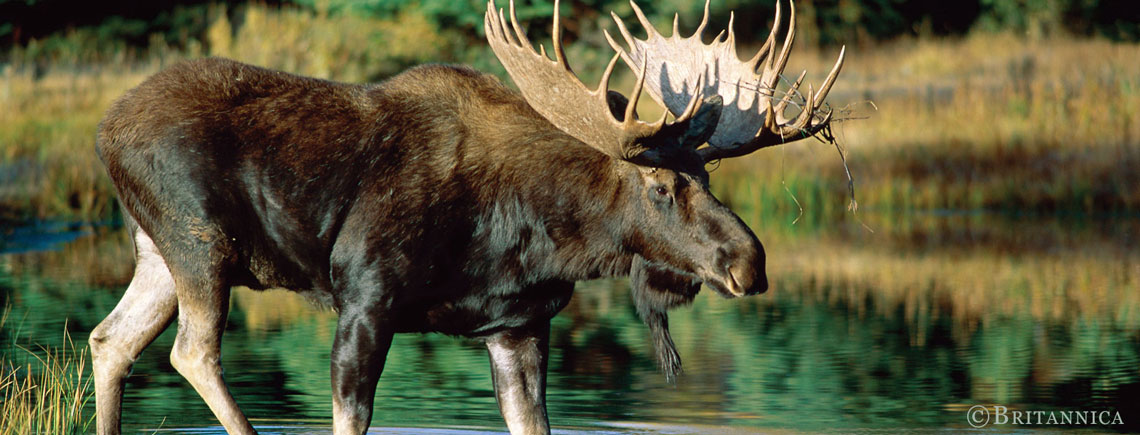Moose on our Minds
They are near-sighted, somewhat shy and occasionally short-tempered. They are also fascinatingly ugly—except to other moose. So it is little wonder that their presence in Northwest Connecticut is a curiosity for human residents.
“There’s a lot of interest in the community” said Matt Gallagher, new director of Great Mountain Forest, which encompasses more than 6,000 acres of contiguous forestland in the towns of Norfolk and Canaan. “We wanted to give people a chance to find out more.”
Thus, GMF is kicking off its Winter Lecture Series with Moose in Connecticut—History, Status and Future Expectations February 5 at 4PM at the Falls Village Children's Center, 103 Main Street. The program will be presented by Connecticut DEEP Wildlife deer and moose biologist, Andrew LaBonte, who will discuss the historical presence of moose in Connecticut, habitat suitability, distribution throughout the state and other concerns. A reception follows the lecture.
Gallagher said moose have been noted in northern Connecticut since the turn of the century. “People started to notice signs of them in the forest in 1999,” he reported, “and then there was a first sighting in 2001 at the Falls Village hydroelectric plant. In 2006, we found the first shed antlers.”
GMF’s first glimpse of an animal on its own land came in 2003 when a moose was seen near Route 272. “We’re continually asked how many we might have,” Gallagher said, “so in 2020 we had our volunteers do a census with trail cameras. We found we had twenty-one active in the forest.”
Surprisingly, the census recorded more than twice as many bulls as cows. “There were 11 mature bulls, two adolescent bulls, five cows and three calves. We’re not sure of the outcome of the calves, we didn’t sex them.”
Gallagher said there are no current plans to do another GMF census but is hopeful that there can be a collaborative effort with the DEEP. Moose have been observed in Barkhamsted, Canaan, Colebrook, Goshen, Granby, Hartland, Norfolk, Salisbury, Stafford and Union for six of the last ten years.
According to Master Wildlife Conservationist Virginia Apple of Barkhamsted, who will present a Zoom program, The Mighty Moose of Connecticut, for the D.M. Hunt Library this Saturday at 2PM, Connecticut is on the southern cusp of good moose territory. “They estimate there are 100 to 150 in the whole state,” she said, but predicts the numbers will drop because of rising temperatures.”
Winter ticks are the scourge of the animals, she said, and cold winters are needed to keep the ticks from feeding on the animals in enormous numbers. “The yearlings everywhere are succumbing to ticks.”
Disease and car accidents are the causes of mortality in moose. “The funny thing about moose is that they are dark and our roads here are dark,” said Apple. “They are so tall you can’t see their eyes shine from your headlights, so they are prone to getting hit. Coyotes and bobcats might take one that is sick to feed on, but not commonly. They’re kind of like cows and can kick pretty hard. It’s my observation that lots of predators won’t go after animals that will hurt them. They don’t even go after raccoons because raccoons have big teeth and long nails—it’s much easier to go after a bunny.”
The ideal habitat for the animals is a wooded area with healthy marshes that provide good plants and leaves to browse on.
“Great Mountain Forest is perfect moose habitat,” she said. “It’s not overrun with people. Hartland has a pretty healthy population—I hear of one or two sightings a week—and there are some in Peoples State Forest but not a huge amount. Then, randomly, one will show up in a place like New Britain.”
With moose living in relatively close proximity to people, there is always the chance of a meeting up close and personal, an event that can prove dangerous if proper precautions are not observed. “I’m more afraid of a moose than a bear,” said Gallagher.
In his essays on the DEEP website, LaBonte advises caution around moose because of their size—bull moose weigh 900 to 1,400 pounds and cows some 700 to 1,100 pounds. Even more caution is needed during the fall breeding season and in summer when mothers have young calves. The animals are notoriously crochety and may charge without notice. They are fast runners, reaching 30 to 40 mph and if provoked they can be deadly.
GMF attendance on February 5 is limited to 60 persons. Masks and proof of vaccination are required as is advanced registration by contacting Matt Gallagher at matt@greatmountainforest.org or call 860-824-8188 for more information.
Attendees can register for Apple’s program by going to www.huntlibrary.org, on the library’s Facebook page or by calling the library at 860-824-7424.

